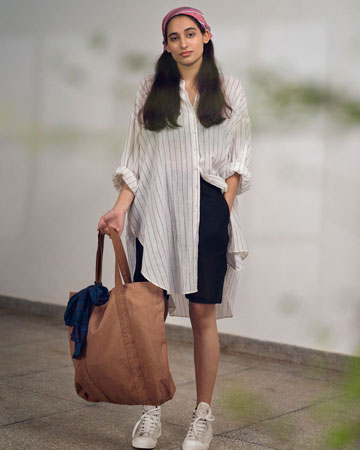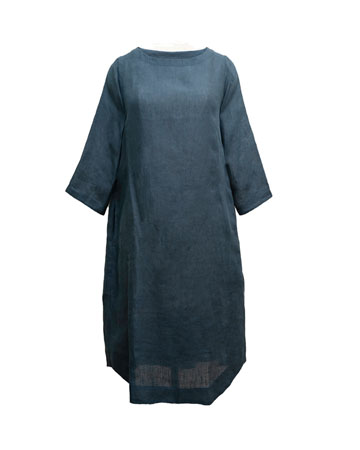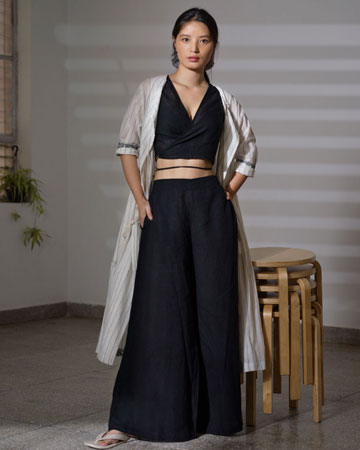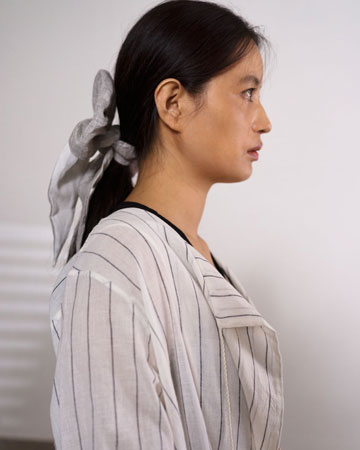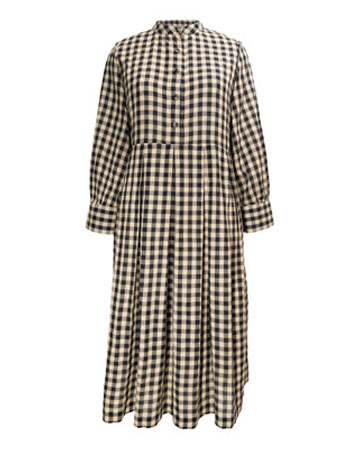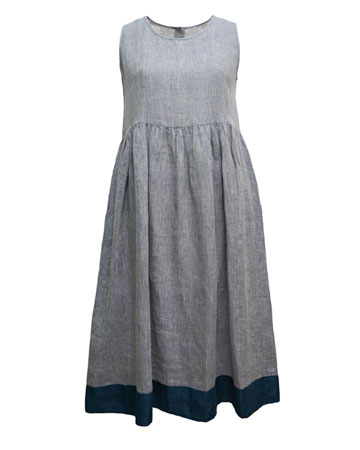
A Return to the Core
- Fashion
- |
- 20 August 2020
- Priya Kumari Rana
Rina Singh of sustainable fashion label eka launches her new CORE collection, and tells us about her love of indigenous, handloom textiles, her easy silhouettes that defy seasonal trends, and how the Indian textile is always the hero in each garment.
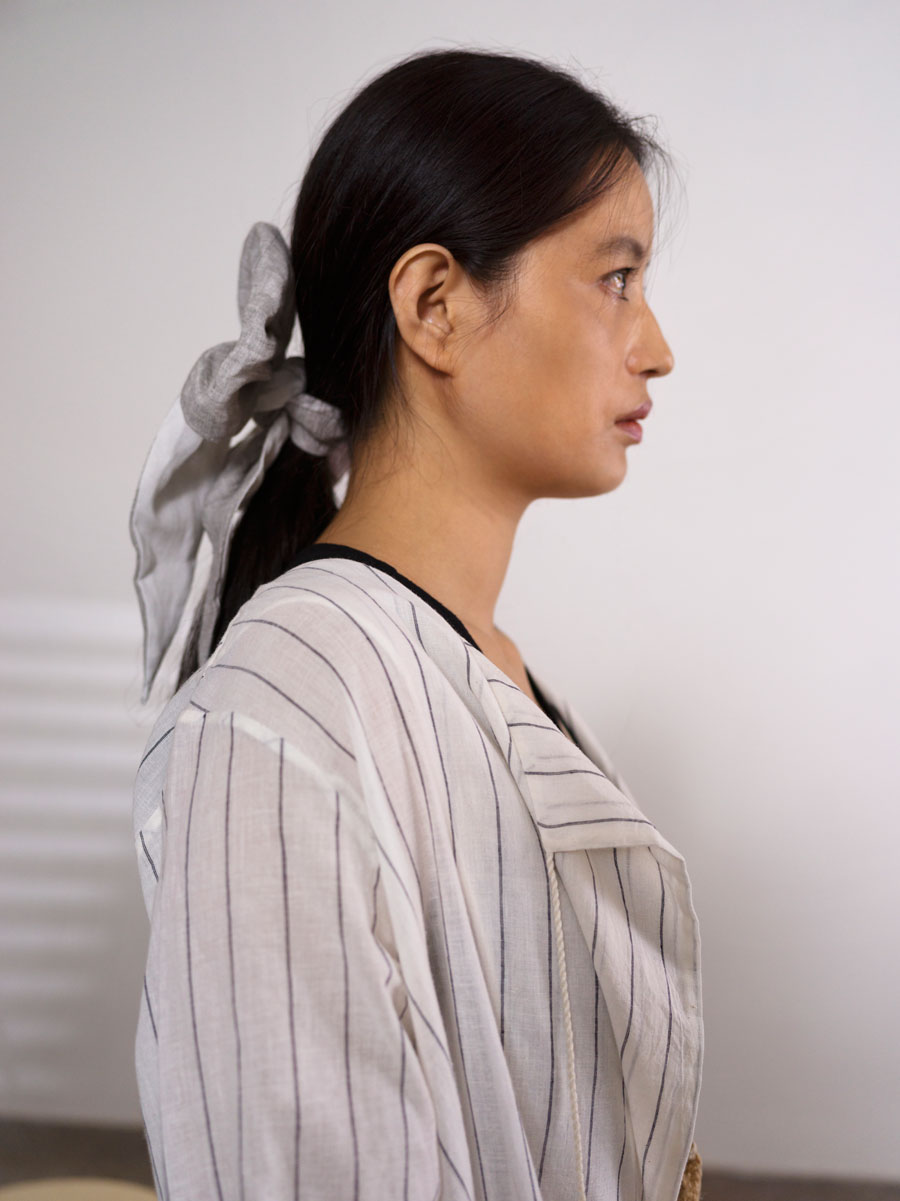 Detail of a look from eka's CORE collection
Detail of a look from eka's CORE collection
Could you please explain to us your design philosophy and love of indigenous crafts?
My design philosophy for eka or eka CORE is essentially the same. I like to make clothes that are accessible, wearable for everyday use, made with good textiles, meaningful, and timeless in design. They don’t need to cater to any trend but to the idea of thoughtfulness and mindfulness that associates clothing with everyday life to bring in comfort, ease, and value for the textiles.
Where does this love of indigenous crafts stem from? Where did you grow up and how did that have an influence on how you love indigenous handcrafted work?
The paternal and maternal sides of my family are into farming and agriculture, so I grew up with a lot of craft influences. It was a community culture where weaving and other ingenious crafts were a part of our lifestyle. I studied in a boarding school, but during my holidays I got to experience the fact that weavers would sit in the courtyard of my family home. They were commissioned to make rugs for our family. My nani used to spin the charkha in the afternoon with the other women of the household. Sustainability was also a part of my lifestyle in the sense of the kind of fabrics we would wear. In my family home, cotton, natural fabrics, handspun, handwoven fabrics, and blockprinted textiles were used; these were made nearby, so the influences were very local.
What was the first artisanal piece of clothing that you remember wearing – or that your mother wore?
From my mother’s wardrobe I had quite a few beautiful benarasi sarees, and also khadi khes (khes is like a throw/summer blanket). I remember this being made in the courtyard of my maternal home. I remember how my nani and the other women of the household used to make the yarn on the charkas and collect it on the spool. The dyer from the nearby village would come to pick up the yarn for dyeing, and by the time the weavers came, there would be a pile of yarn in different colours. The weavers would then put the loom down and assemble it. They would come with their families and live with us in our outhouse. So I have beautiful memories of those rugs being made in our home. My mother had beautiful handloom textiles from Benaras.
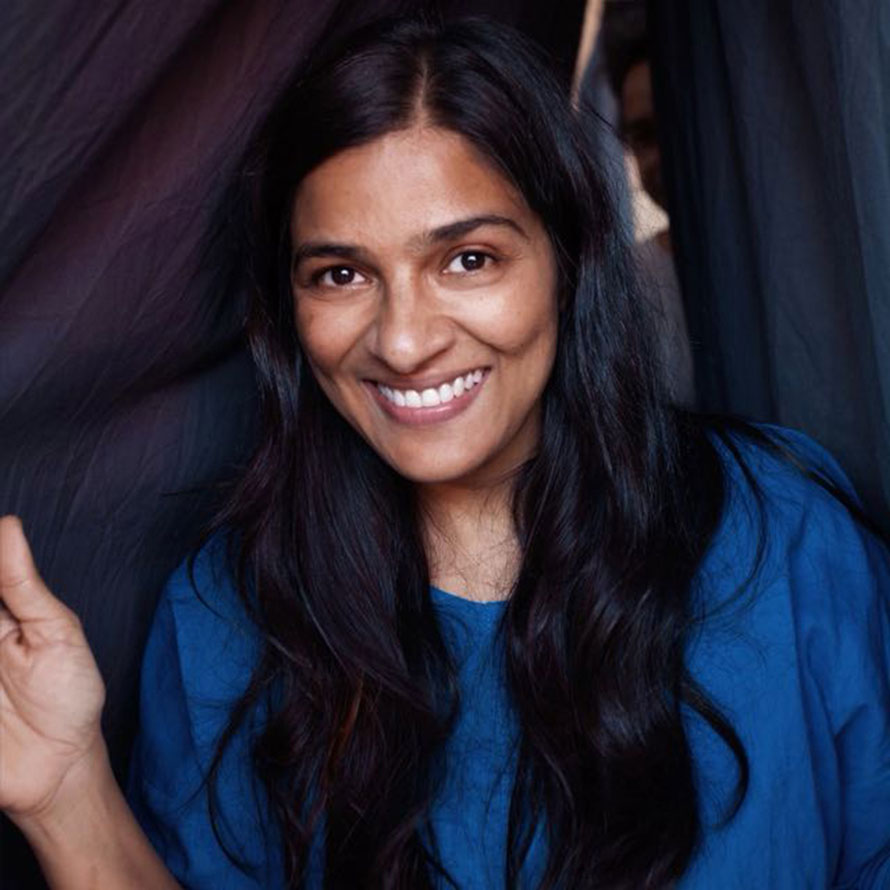 Rina Singh, Designer and Founder, eka
Rina Singh, Designer and Founder, eka
Can you tell us about eka – you were into sustainability long before it became fashionable – how have you always stuck to sustainable fabrics?
I have always bought really good textiles from my visits to the clusters wherever I’ve been. When I was in college, we would travel to Dharmarkha from where I got this beautiful handwoven dupatta which I still have. It has a beautiful drape with dip-dyed colours. All my life I’ve seen my mother in these textiles; in the end, as a creative person you are always drawn to your childhood influences. Those visits of mine to the clusters resonated with me, and when I saw their lifestyle and how humble and passionate they were about their craft, it was such a humbling experience. My return to the world of crafts and being able to use that learning in establishing my label was my true calling.
And today, in light of the pandemic, how did you upcycle your fabrics at eka to create this CORE collection?
The only thing that changed for me during the pandemic was that I knew how I wanted to carry forward whatever I’ve done over the years and built for eka, as everyday clothing. By not making so many collections a year and sticking to the core philosophy of eka, which was always about simple shapes and silhouettes and timeless textiles, I wanted to get back to my roots. Over the years, eka’s seasonal collections explored a lot of beautiful possibilities for the eka woman, but somewhere I wanted to return to the very core of eka - making timeless, everyday collections that were accessible in terms of pricing. So I’ve upcycled and recycled all the textiles that I’ve collected and created for eka over the years, by dyeing them or cutting them into new shapes. I’ve mixed and matched fabrics to create subtle shades that can be worn every day.
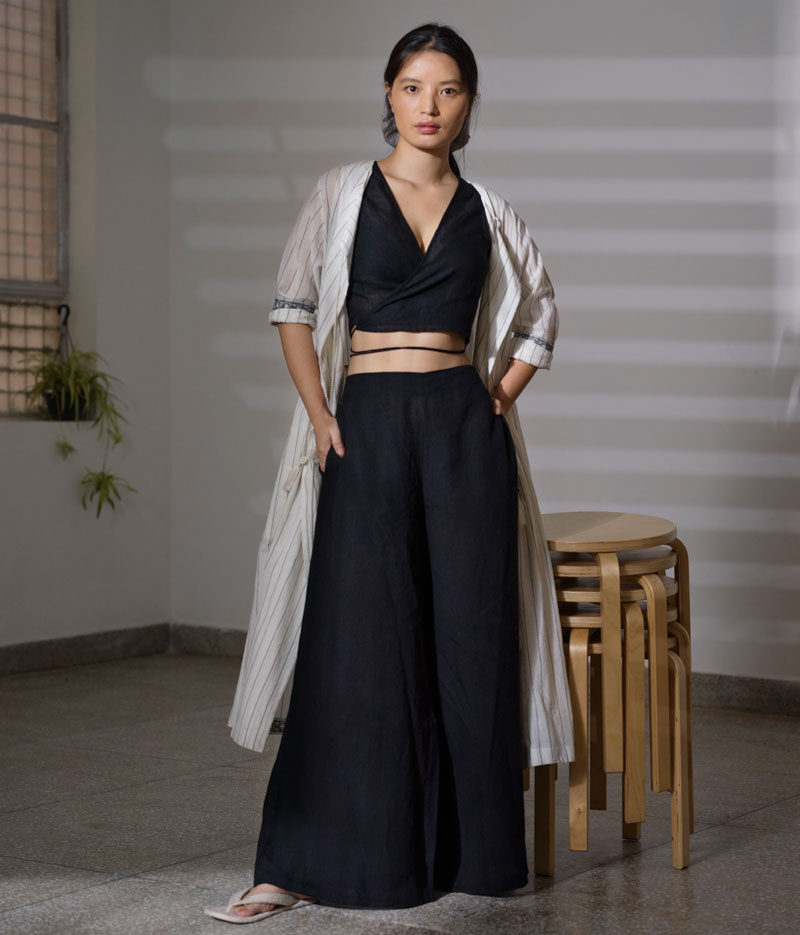 Indian handloom fabrics are the hero of Rina Singh's CORE collection at eka
Indian handloom fabrics are the hero of Rina Singh's CORE collection at eka
The word trans-seasonal is intriguing, especially today – when fashion is trying to be seasonless – how would you define this term?
The idea of trans-seasonal clothing emerges from creating clothes that are outside of the collections – seasonal offerings where one piece of clothing can be worn through the year. It needn’t subscribe to a collection’s ideology and philosophy of colour, pattern, or theme. I’ve created a mono-tonal pattern which can be sustained the whole year. I’ve stuck to silhouettes that can go through the seasons.
And why does it make sense to be trans-seasonal – for you at eka?
I do really well-made textiles that are very well invested in. The design philosophy is such that it really doesn’t have to stick to a particular trend. The details and design ideologies are really timeless; there is nothing that is in fashion today that you must get as the ‘it’ item, and by the next two seasons you will have to discard it because it doesn’t serve the purpose of fashion anymore. The eka collections are timeless and this just feels like an organic decision in terms of taking that story further. I just wanted to define the colour palette, shapes, and textiles in such a way that they become a seamless addition to the other collections, and nothing feel forced.
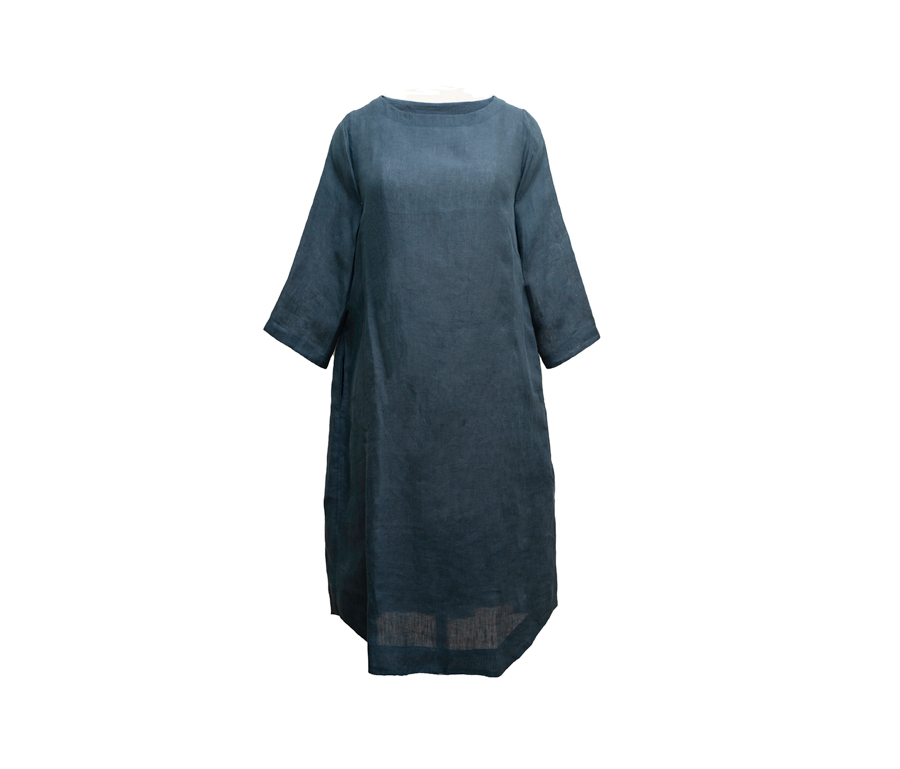 Louche silhouettes and subdued colours at eka's CORE collection
Louche silhouettes and subdued colours at eka's CORE collection
Your silhouettes have always been a bit louche – could you please tell us what are the mainstays of your collection – and how they work for everyday dressing?
The mainstay for eka is always well thought, well designed natural textiles. These textiles are like investment pieces; once you have them you can wear them all your life. Besides, the shapes suit the fabric. I never want to cut too close to the body or contour more than what the fabric will allow, since these are natural and breathable textiles. They always end up taking the shape of the body, so there’s no need to cut extensively and make fashionable patterns and stich lines. The touch and feel of the fabric is so beautiful that all it needs is a minimum block-printing detail or the addition of beautiful borders. Making the textile the main focus of the garment is my main philosophy, and that only comes out when I’m not trying to overdo the silhouette or the shape of the garment, and trying to stick to the basic so that a timeless design can be created.
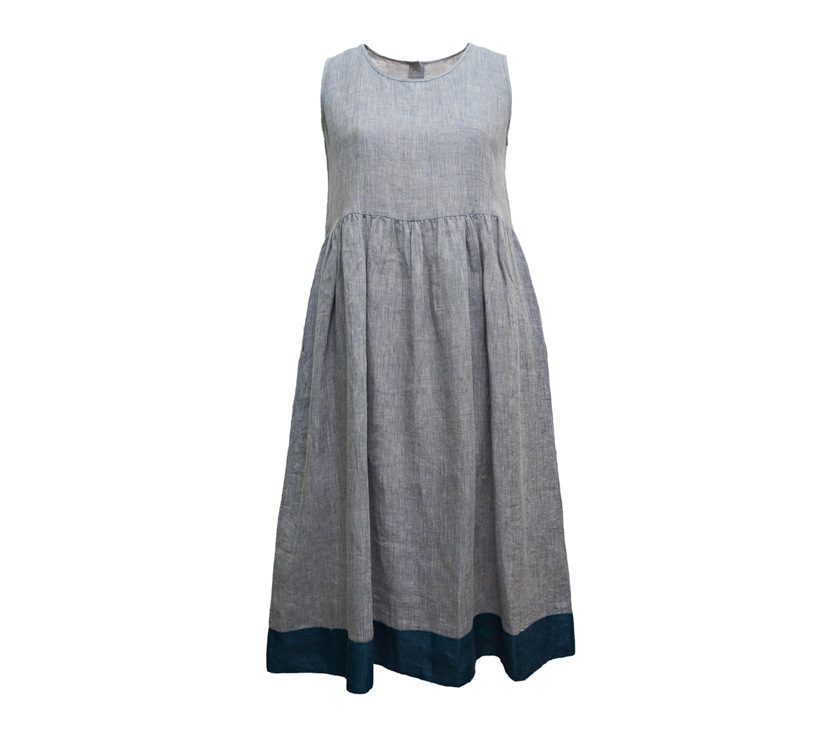 Modern but easy to wear, eka's CORE garments are borne of Indian textiles
Modern but easy to wear, eka's CORE garments are borne of Indian textiles
What are the fabrics that you have used?
My textiles are all natural and biodegradable – like cotton, linen, and silk which is also in certain blends, plus wool. A lot of it is done on handlooms.
You’ve worked with handloom weavers in Telangana for the last Lakmé Fashion Week collection – which are the specific handloom communities that these fabrics come from?
I worked with handloom clusters in Pochampally and Mahadevpur, and I did a lot of work in Narayanpet. Narayanpet is known for its cotton sarees with borders. At Pochampally handloom park I worked on ikat textiles. I did variations of the ikat which was not in the traditional format – more contemporary, modern motifs and colours.
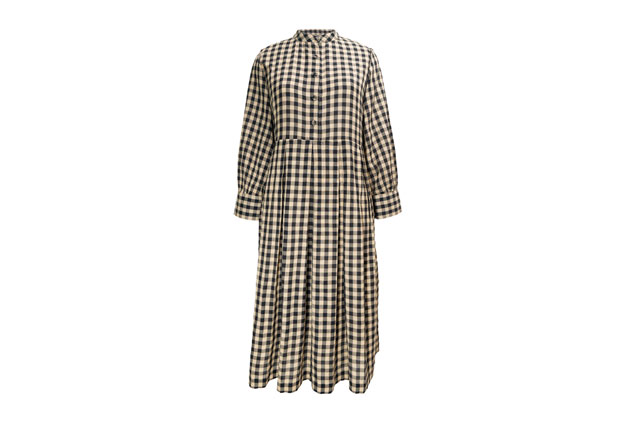 Checks figure prominently in eka's CORE collection
Checks figure prominently in eka's CORE collection
What are some of the motifs – like checks that you have used – and why do you like these for everyday wear?
For the ikat textiles I worked with a lot of checks as well as abstract motifs which were really artistic. I wanted to create a pattern that was contemporary and fresh, and not stick to traditional motifs. I wanted to avoid them looking like I‘ve carried forward the saree textile and just cut it and made garments out of it.
The colours are not very bright – is this deliberate?
I don’t really like working with too many bright colours, to be honest. I prefer paring down the bright colours as in a watercolour painting, which has that subtle, subdued sheen. Once in a while you may want to add a brushstroke of strong colour to make an impact. So whenever I’m given a strong colour I try to balance it with neutral or dull tones so that it doesn’t turn into a caricature in terms of the colour palette, and doesn’t stick out. A lot of people identify with the subdued colour language that I’ve advocated for eka. I feel that people will always want to wear clothes to embellish their personality and not vice versa. I think your personality should outshine what you’re wearing.
What jewellery do you recommend with eka clothes?
I like to go with very subtle pieces, except for once in a while when I want the jewellery to be the talking point. I never want the clothes, jewellery, hair, or makeup to jar or look garish. A single element of surprise is good enough.
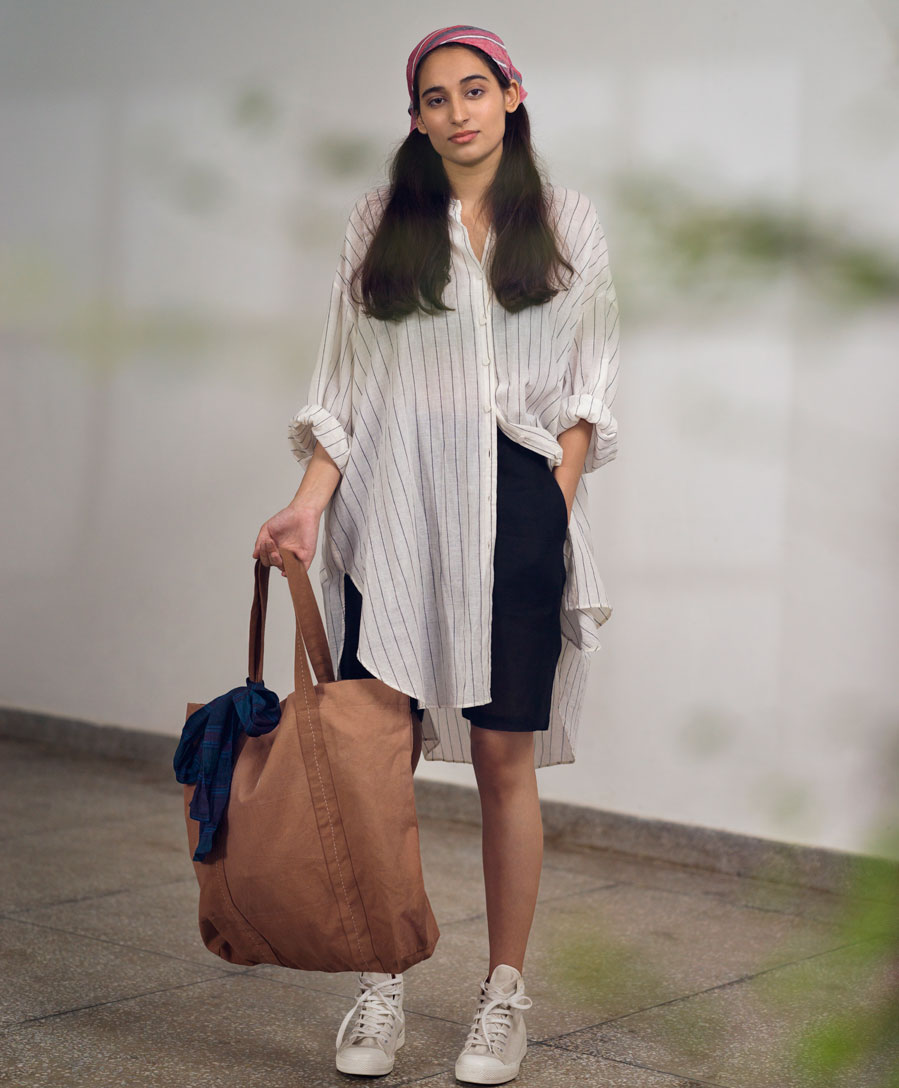 An eka look from the CORE collection
An eka look from the CORE collection
What are you currently working on – what can we expect from you next?
We are midway into our Spring/Summer 21 collection. Our hope for the upcoming collection is centred on bringing the fashion industry back on its feet and lifting its morale. We want the charm, comfort, and joy of clothing to return to our everyday lives.
What is one fabric you would love to work with?
I mostly create my own textiles. I have worked with almost all the natural Indian textile fabrics. There are some textiles like kanjeevaram or benarasi which I have not been able to render in a signature eka way; I would love to do that in the near future.
FOLLOW US ON INSTAGRAM

Lifestyle Insider is a kind of junction point, connecting people with diverse interests that touch on the more luxurious aspects of lifestyle – fashion, design, travel, food and spirits, art, watches and jewellery, cars, yachts, and aviation, and technology. People today don’t fit into boxes and categories. In our individual ways, we are interested in diverse themes, products, and the challenges that face our world today. You will judge how well this effort of mine caters to your passions and proclivities.
Lifestyle Insider is a showcase of all that is beautiful and luxe. Behind every creation, is a designer, chef, entrepreneur, or a design maison. I have delved into my own appreciation for objetsde luxe that I have admired over the years – be it a love of fashion from the world’s top Parisian and Italian fashion maisons and their ’90s muses, or the care that goes into sari and Indian textile collections in my own family. Growing up on four continents, as the daughter of a former Indian Ambassador, I’ve seen a remarkable array of historic places and met a myriad people. My aim is to bring my world view into this website, a curation of what I find particularly stunning, unique, and newsworthy.
It’s an exciting time for brands all over the world. With change comes opportunity. With the global ‘reset’ and uncertainty on many fronts, there is a chance to write a new script. Let’s be those pioneers.
A bit about me:
A luxury and fashion journalist with 25 years of experience in publishing and magazine journalism, I have edited some of India’s top fashion and luxury magazines. I got my BA in Comparative Literature from UC Berkeley, and went on to receive my Master’s in English and French from the University of Strasbourg, France. I have also studied German and Film. I live in Gurugram, India, and look forward to once again exploring our world with a new-found freedom.
Priya Kumari Rana
Founder and EditorContact Us
Mail us @ lifestyleinsiderindia@gmail.com



